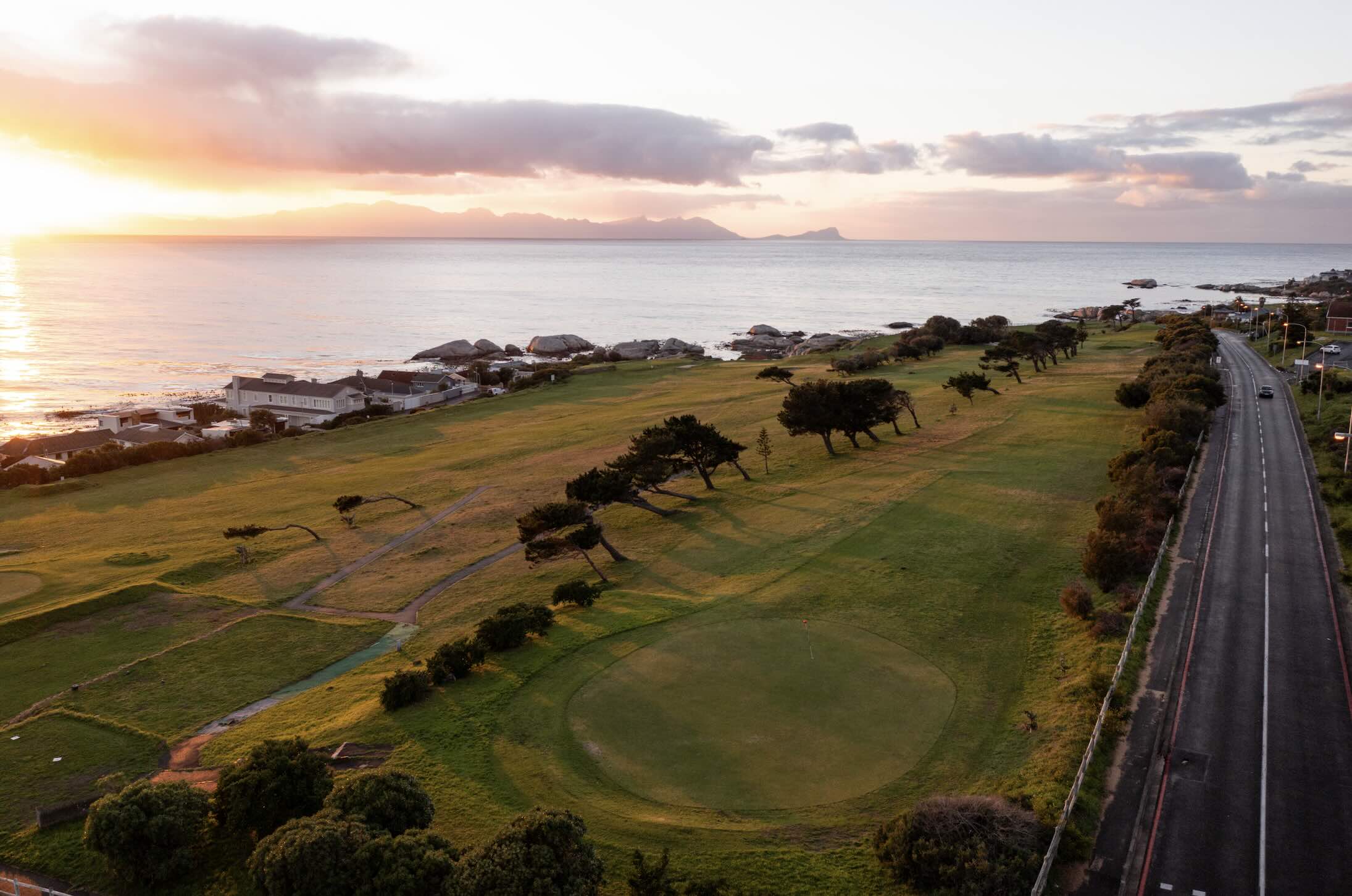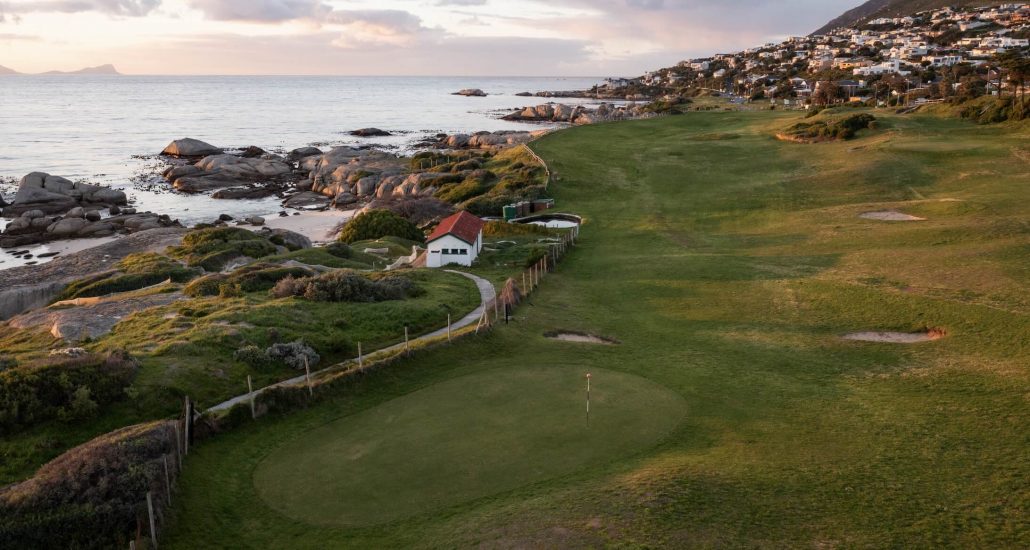At -34.19 degrees south, Simon’s Town Country Club must boast one of the southernmost golf courses on the African continent, writes MARK SAMPSON.
The first documented information on Simon’s Town was in 1652 by Jan van Riebeeck from the Dutch East India Company who used the area as a refreshment station for the fleet. Its first known name was Simon’s Bay or Ysselsteijn.
It was only in 1743 that Simon’s Town became an official anchorage on the shipping routes. The area welcomed numerous persons of historical influence from royalty, explorers and natural scientists.
In 1772, Captain Cook visited Simon’s Town on his round-the-world voyage, followed by Lord Nelson in 1774. The Dutch stronghold on the area was overturned in 1795 when the British arrived and occupied it.
It was only in 1807 to 1813 that a road was completed connecting Simon’s Town to Cape Town centre. The first school in the area was completed in 1815.
The first member of the British royal family, Prince Alfred, son of Queen Victoria, arrived to visit the area in 1860. The railway station was completed in 1890 and opened by Cecil John Rhodes. Boer prisoners of war were held on prison ships in Simon’s Town in 1899.
What you won’t find at Simon’s Town Country Club is pristine greens and large mature trees; it will most likely be windy and the layout a little confusing. A day out to the area should be more about the experience and knowledge that the area is steeped in centuries of history.
The ocean beside the course paved the way for its early discovery and the natural lay of the land made it one of the most important harbours, and places of sanctuary for the first seagoers. It experienced the earliest habitation and ‘control’ by the Dutch before the British took over.
It can also boast to be one of, if not the most southern golf courses on the African continent and most likely the only one with a penguin colony within a well- struck 7-iron from the corner of the course.
The deep south is also known for its welcoming hospitality, with the country club offering competitive rates for golf as well as conference and wedding facilities.
The entrance is adorned with trophies and images dating back as far as the 1920s. Records show the course was opened in 1916; however, there is speculation that it course may have been present prior to the Boer War (which took place between 1899 and 1902) when the land was used for prisoners of war.
The club has seen several setbacks, including the closure of the once popular bowling green which was a large part of the income. The local naval base was also a source of income as golf was very popular within the navy. This, too, seems to have changed.
The club also suffered a major setback when the entire bar area and part of the clubhouse burnt down. Fortunately, as the land and infrastructure are loaned from the city, the damages were well covered by insurance.
The club is also trying to secure a long-term lease as it currently leases the land on a month-to-month basis which does not elicit a sense of longevity within the golf community.
The course is short at only 4 148m with no par fives and six par threes. That said, it is still a great layout to hone the swing. The summer months almost guarantee some strong wind which will be sure to test your shot making as the course also dries out at this time of the year. Unfortunately, the cost of water exceeds the means of the club and local springs and water off the surrounding mountains is used for the greens.
One can also expect small greens that are relatively flat and slope towards the ocean. In modern times, with time being a precious resource, a shorter course with only 10 greens may be the perfect answer to those not having five hours to spare in their day.
The course starts with a steep uphill par three of 170m; when played as the 10th it is shorter at 139m. At 18m in depth, it is one of the smaller greens to hit, especially with the increase in elevation. If the wind is up, landing the ball short is advisable. It is also the high point of the course so be sure to take in the view of Simon’s Town and False Bay with Rooi Els in the distance, quite spectacular.

One then takes a short, steep, downhill walk to the next tee for the 2nd/11th hole. Playing downhill, the 245m par four presents a birdie opportunity. A small water hazard short right of the green is in play, especially in the drier months. The green is only 16m deep and has a very sharp drop off the back which leaves a very difficult up and down.
Turning back on yourself, the 3rd plays with the prevailing wind and slightly downhill. The 3rd and 12th are the only holes with their own greens, hence the total of 10 greens on the course. Down the right side of the hole is out of bounds into suburbia and the aptly named Links Road. A small bunker left and 15m short of the green will capture any long hitters going for the green in one.
On completion, one leaves the course and walks along the road to the tee box of holes 4/13. A couple of metres difference in yardage can be expected when playing the hole for the second time, otherwise it remains the same. It is the stroke one of the course at the first playing and for good reason. It is also the signature hole of the course (see below).
Next up is the 5th/14th par four. It plays steeply back down to the green, set beside one of Cape Town’s most famous and picturesque beaches, Windmill Beach. Just another site to visit when in the area. It’s a favourite of kayakers and scuba divers due to its generally flat and calm conditions and easy accessibility. The interesting thing about the 5th/14th is it plays back in the same direction you have just played from, meaning be very wary of incoming golfers. At 266m it is not long but has plenty of danger in the form of out of bounds down the right, the Windmill Beach area, and a small holding pond is also in play on the right. On the left two bunkers are in play and greenside a small bunker right will snap up any rolling approaches.
One then turns back once again and starts heading back towards the clubhouse. The 6th/15th hole is one of the few holes with a big difference when playing it for the second time due to two separate tee boxes. Initially it plays to 143m and then on your return a mammoth 183m from a lower tee box. That, into the prevailing wind, may require a well-struck driver to reach the green of this stroke six with a diminutive green of only 16m deep.
All is forgiven when you reach the tee of the 7th/16th hole. Playing with the wind to a maximum length of only 115m, a wedge should suffice for both. The biggest danger on this hole are the three small bunkers just over the back.
The 8th/17th plays to a stroke rating of 7/8 respectively. This is primarily due to the main road and out of bounds along its entire left-hand side, bearing in mind the south-easter will be guiding your ball in that direction. The green has no real danger surrounding it and at 25m deep, makes for one of the larger targets on the course.

The closing holes, 9th/18th, on aggregate are the second longest on the course, hence the three and four stroke rating. They also play straight back into the wind, making for a truly testing closing hole. Be sure to favour the left side of the fairway to avoid being hindered by trees on the right during your approach. Greenside, a small bunker right is the only trouble on this 19m-deep green.
One then routes uphill, back over the main road, to the clubhouse. The view from the bar and braai area can be enjoyed with a well-priced beverage.
At the main entrance, several images, trophies and the original course layout from 1920 can be viewed to once again confirm the amazing history of this little gem of a club. As the locals say: ‘If you can play Simon’s Town, you can play anywhere.’ And that is not to be derogatory, but if you do find the course on a windy day you will be sure to agree.
What you will also agree on is the sheer enjoyment factor of this unique 10-green, 18-hole layout. Quite amazing when you look at the numbers of 65 members, 3,600 rounds per year and two green-keeping staff.
So remember to support local on your annual holiday from the interior. And if you’re a Capetonian, remember to play this course once a year to support what is a great little club.
SIGNATURE HOLE
4th/13th holes, par four, 307m

With only three metres in difference between how it plays as the 4th versus as the 13th, this hole is the signature hole at Simon’s Town Country Club.
It plays to a maximum length of 307m and is one of the few holes on the course that plays uphill. It is the longest hole on the course and plays with the Atlantic on your left with the prevailing south-easter in, and across, your direction of play.
Length and wind are its main protection. From the tee box it’s driver all the way with not much danger to consider. A pocket of bushes can be found about 80m from the green and right of the fairway, otherwise you should be good to go. The fairway narrows the closer you get to the green but the rough should not present much of a challenge. During the approach, consider the raise in elevation to the green as well as the wind, which will be left-to-right.
The good news is this is one of the biggest greens on the course, especially due to its width, playing to 27m left-to-right, which will certainly help with the crosswind. Greenside, there is very little to worry about other than out of bounds about 15m over the back of the green, which is 22m deep.
Like most of the greens on the course, it slopes gradually towards the ocean and as the greens are not very quick, remember to give a firm rap on anything uphill to give yourself a chance. This stroke 1 and 2 is a tantalisingly beautiful hole but in windy conditions can wreak havoc on a scorecard. On your way to the next tee, take in the view over the ocean which is one of the best on the course.
GREENFEES
Members: R130 9 holes R155 18 holes
Junior members: R80 9 holes R100 18 holes
Member guests: R140 9 holes R170 18 holes
Visitor affiliated: R190 9 holes R265 18 holes
Non-affiliated: R220 9 holes R295 18 holes
Golf Cart: R250 9 holes R330 18 holes
ADDRESS
306 McFarlane Road, Simon’s Town, 7995
ROAD DISTANCES
Pretoria: 1,493km
Johannesburg: 1,433km
Durban: 1,671km
Bloemfontein: 1,036km
CONTACT DETAILS
Email: [email protected]
Phone: (021) 786 1233
Website: www.simonstowncountryclub.co.za
– This article first appeared in the October 2024 issue of Compleat Golfer magazine.










